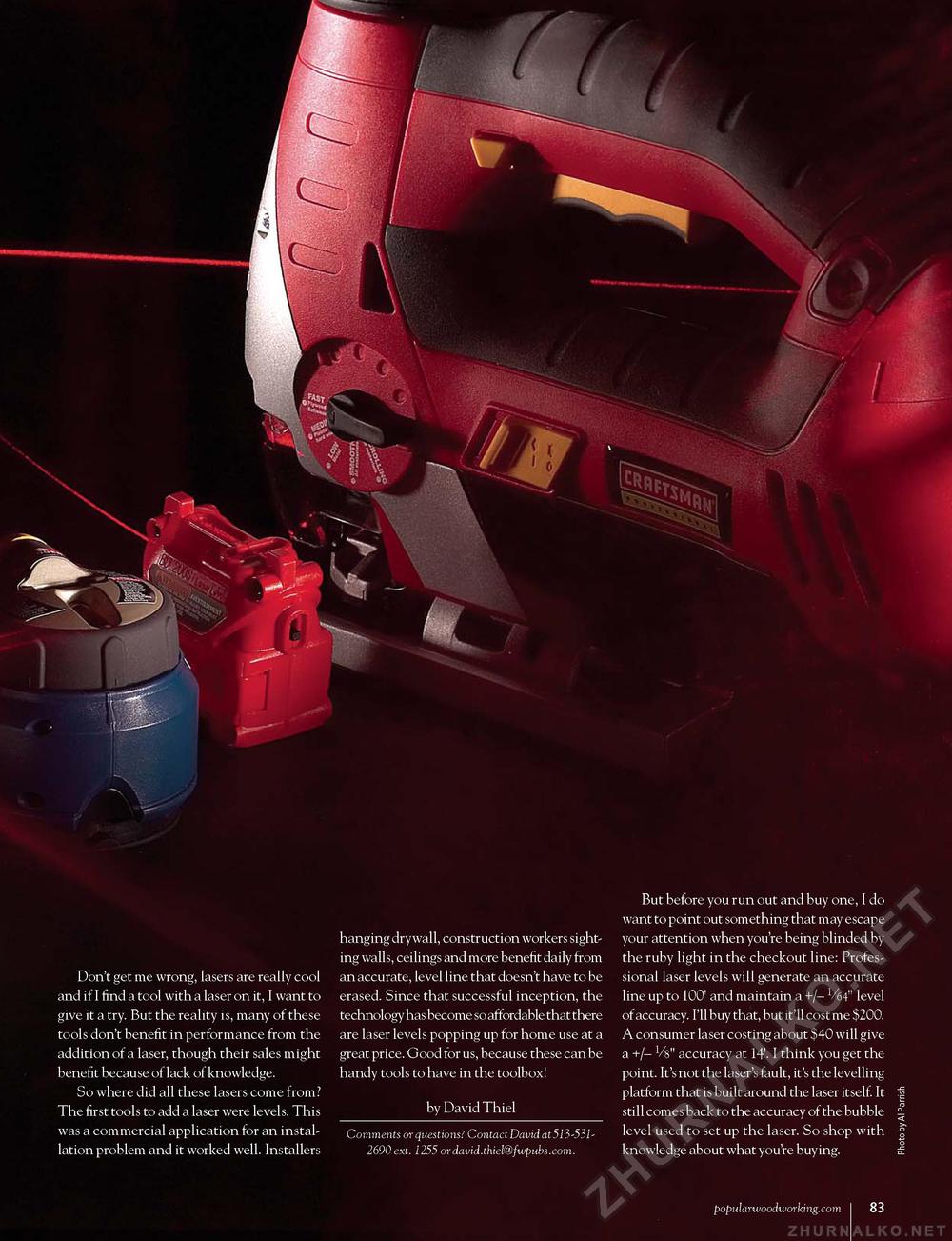Popular Woodworking 2005-11 № 151, страница 86
Don't get me wrong, lasers are really cool and if I find a tool with a laser on it, I want to give it a try. But the reality is, many of these tools don't benefit in performance from the addition of a laser, though their sales might benefit because of lack of knowledge. So where did all these lasers come from? The first tools to add a laser were levels. This was a commercial application for an installation problem and it worked well. Installers hanging dry wall, construction workers sighting walls, ceilings and more benefit daily from an accurate, level line that doesn't have to be erased. Since that successful inception, the technology has become so affordable that there are laser levels popping up for home use at a great price. Good for us, because these can be handy tools to have in the toolbox! by David Thiel Comments or questions? Contact David at 513-5312690 ext. 1255 ordavid.thiel@fwpubs.com. But before you run out and buy one, I do want to point out something that may escape your attention when you're being blinded by the ruby light in the checkout line: Professional laser levels will generate an accurate line up to 100' and maintain a +/- 1/64" level of accuracy. I'll buy that, but it'll cost me $200. A consumer laser costing about $40 will give a +/- Vis" accuracy at 14'. I think you get the point. It's not the laser's fault, it's the levelling platform that is built around the laser itself. It :| still comes back to the accuracy of the bubble level used to set up the laser. So shop with knowledge about what you're buying. I popularwoodworking.com i 83 |








